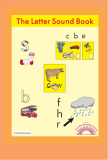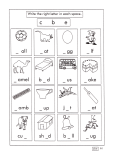First Letter Sound Book
Learn to Read, Read to Learn
Teachers are aware that through the formative years, children learn to read. From that point on, they read to learn. That is why reading is the most important skill a child will ever learn.
The knowledge of letter sounds is often the first step in the development of phonic skills, which leads to beginning reading. It is helpful for pupils to master this knowledge before progressing to c-v-c[1] blending.
When developing, the knowledge of letter sounds, it is essential for the teacher to provide appropriate auditory models of the sounds. The model needs to be suitable for blending e.g. the sound ‘t’ needs to be a short, clipped sound rather than ‘ter’. Sounds that can be ‘stretched’ need to be modelled correctly e.g. ‘m’ can be stretched to ‘mmmm’ but should not be stretched to ‘mer’.
Short sounds are: a, b, c, d, e, f, g, h, I, j, k, o, p, q, p, t, v.
The auditory model for ‘k’ should resemble ‘koo’.
The auditory model for ‘x’ should resemble ‘ks’.
If the child is experiencing difficulty with Phonic Test 1 ~ Letters, the Letter Sound Book is recommended as appropriate teaching materials.
[1] Consonant-Vowel-Consonant.






